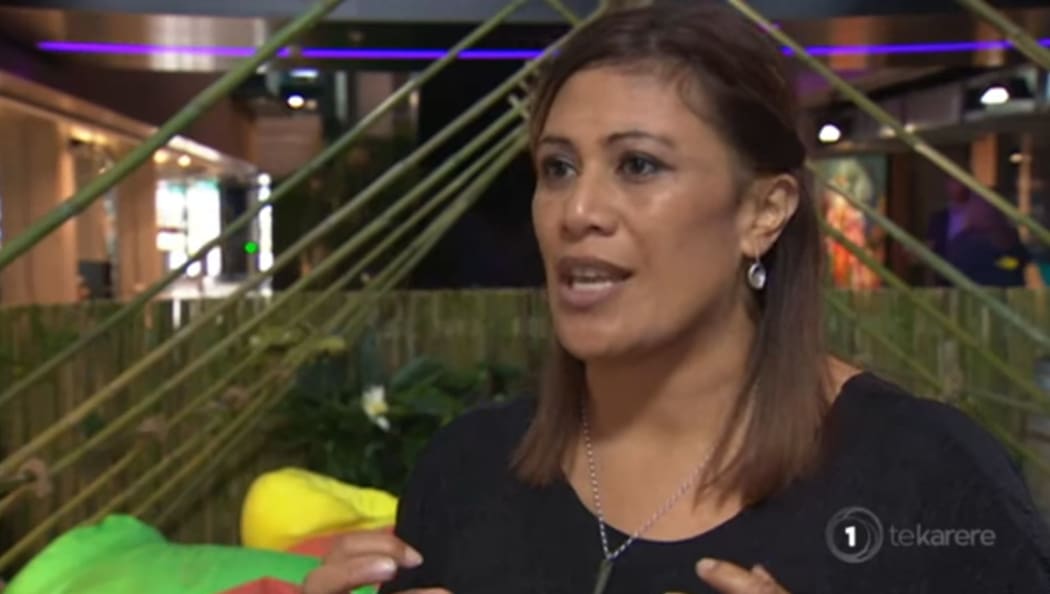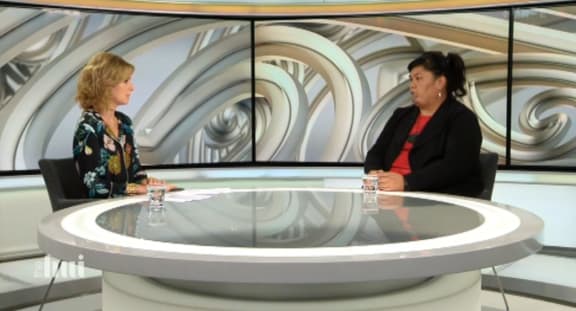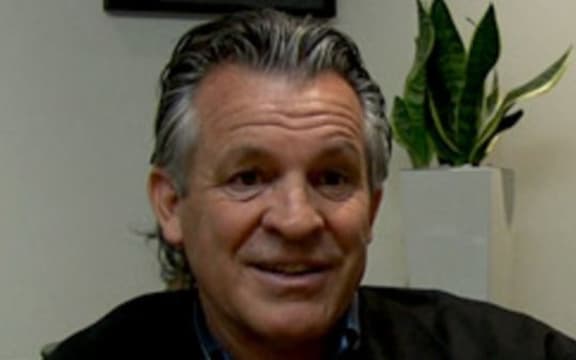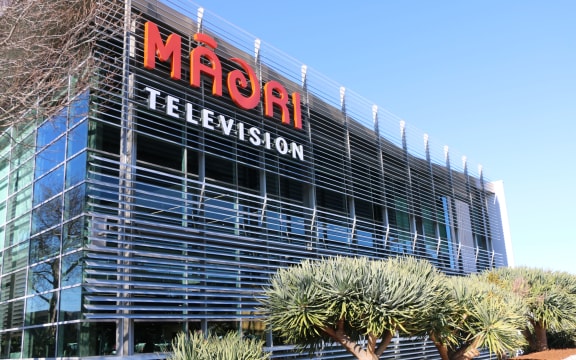A major review of Māori broadcasting has been announced by the government against a backdrop of growing problems. Mediawatch talks to an executive who hopes it will confront 25 years-worth of unresolved issues.

TVNZ's Nevak Rogers on Te Karare. Photo: scre
Last month the government instructed Te Puni Kōkiri - the Ministry of Māori Development - to review publicly-funded Māori broadcasting.
The project has been called the ‘Māori Media Sector Shift'.
Employing the standard future-focused phrases for rejigging the media these days, Minister For Māori Development - Nanaia Mahuta - said the aim was to make it “future-proofed and fit-for-purpose in the digital age.”
The review covers the Māori broadcasting funding agency Te Māngai Pāho, the Māori Television Service and Te Whakaruruhau o Ngā Reo Irirangi Māori, the group that oversees 21 iwi radio stations around the country.
This comes at a time when the biggest broadcaster by budget - Whakaata Māori/Māori Television - is clearly under pressure.
Around 18 jobs are on the line there and the recently appointed chair and the chief executive have warned frozen levels of funding over most of the past decade are holding the broadcaster back.
It got a $10 million-dollar budget boost in 2016 from the former government, but a move from Newmarket in central Auckland to a new premises in East Tamaki put a big dent in that.

The minister of Māori development Nanaia Mahuta on Three's The Hui earlier this year confirms that job losses are likely at Māori Television. Photo: screenshot
"It came at a considerable cost and ultimately people are now facing the consequences of those costs. They will not like me saying that but ultimately that is the reality of the situation they’re in," journalists' union E Tū organiser Joe Gallagher told Waatea News.
The new premises are supposed to be cheaper in the long run but it has just a single studio.
Mediawatch understands plans for a second one have been scrapped to save money.
Before the announcement of this review, Te Māngai Pāho chief executive Larry Parr floated a shift of its own: what’s been called a one-stop-shop for Māori broadcast news.
It proposed funding fewer news shows and newsrooms so better resourced programmes could be seen and heard across the Māori media.
But the associate Māori development minister Willie Jackson - a former boss at Radio Waatea and former chair of Te Whakaruruhau - was not a fan.
"I'm concerned we have a CEO of Te Mangai Paho...and I'm not sure he know what he's doing " he told Radio Waatea recently.

Larry Parr Photo: Supplied
"I'm disappointed with all this talk about rationalising the news. I'm on record as a chair of Te Whakaruruhau as saying Pākehā have got all the news bulletins and Māori have to rationalise. I stand by that."
Nevak Rogers started out in journalism at Mana Māori Media in the 1990s before forming her own TV production company making shows such as DIY Marae. She became Māori Television's head of content development in 2014.
In April she was appointed commissioner of Māori and Pacific Programmes at TVNZ.
"The fragmentation of journalism and broadcasting over the past 20 year has not been a good thing. I feel we have an opportunity to bring together the resources and make a powerhouse," she told TVNZ’s news show Te Karere at the time.
Nevak Rogers now oversees Te Karere and long-running TVNZ programs such as Marae and Waka Huia.
In a piece for online magazine E Tangata last weekend, she said she hoped the review would confront what she called “problems festering away for 25 years or more.”
So what are those- and what could be done?
"The fragementation of the Māori sector has been an issue for the 23 years I've been in the media," she told Mediawatch.

The new Māori Television building. Photo: RNZ / Shannon Haunui-Thompson
"Once Māori TV was set up there were 100-odd Māori production companies so the splintering of the industry has been a big issue," Ms Rogers said.
"Each organsiation and the independent production companies all have their own visions. Areas like content for rangatahi are neglected."
The new generation of rangatahi Māori have been "thrashing YouTube and moving en masse to social media platforms like Insta," she wrote in E Tangata.
"The elusive rangatahi audience should be top of our list," she told Mediawatch.
"There's not enough pūtea to do that well. There's bits and pieces of content only and given that the average age of Māori is 23 we need to rethink that," she said.
Te Māngai Pāho spends about $9 million a year, Ms Rogers said, on news services for three networks: Waatea News for Te Whakaruruhau's 21 iwi stations, Te Kāea for Māori Television and Te Karere for TVNZ.
"Sometimes I go to a hui and we're all covering the same things but there are other things we are not covering."
Cutting out duplication is one thing, but if you end up with a single news service will it serve all audience well?
Ms Rogers said the "one-stop-shop" tag was misleading.
What is under discussion now, she said, is "a hub where each organsiation would have rangatiratanga over their own content and new but we could collaborate better".
The idea is being trialled with pooling of content during the Māori All Blacks tour of the US and South America beginning this weekend.
Ms Rogers said TVNZ's Te Karare will use iwi station staff as contributors next year and TVNZ is now helping Māori Televsion to get progammes made and screened.
But if fragmentation of the industry is a major problem, it can't have helped that TVNZ has scrapped its Māori and Pacific unit. Long-running programmes like Marae and Waka Huia are now produced indenpendently for TVNZ, along with Tangata Pasifika.
"I'm not sure I would make that call now," she told Mediawatch.
Ms Rogers said the programmes were still on air and TVNZ is committed to screening them.
"The fact they're made three kilometres down the road doesn't make much difference. They are still part of the whanau and my view is that they are better quality programmes."
Ms Rogers recalled making a programme to mark the first ten years of Māori Television in 2013.
"It was at that point I realised we are nowhere near where we thought we would be ten years before - in terms of building the audience, the channel reached its heyday six years in. The language has been in decline and the production companies have been closing their doors.
"A review is well and truly overdue."

